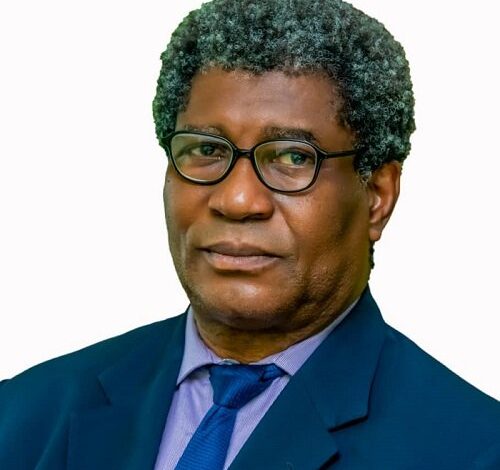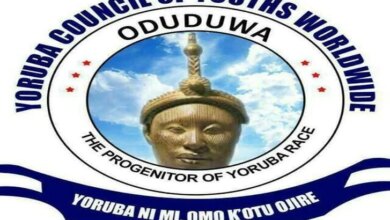Voice as evidence: How forensic linguistics could unravel the faces behind sounds from unknown persons – PROF. DEMOLA



The human voice is not just a tool for expression; it is also potent evidence. Voice conveys intention, bias and power; yet it also has measurable physical features specific to each individual, and as sure as fingerprints. Hence, voice recognition is an example of a behavioural biometric, an analyzable characteristic unique to individuals as confirmation of identity.
Analyzing questioned recordings is the forte of voice forensics, an aspect of forensic linguistics – the scientific study of language in legal and investigative contexts. Indeed, each person has a unique linguistic and acoustic signature: the idiosyncratic inventory of vowels and consonants, the choice of pronouns and vocal fillers, recurrent expressions, emblematic sentence constructions, rhythm, fundamental frequency, decibel and formant values. These features form what experts call idiolect and voiceprint – a person’s symptomatic language pattern, as distinctive as DNA.
Typical scenarios
A typical scenario that could have benefited from this unique forensic specialty is the 2025 case on the floor of parliament in Ghana following a loud public remark directed at the Member of Parliament of Klottey Korle, whereby a yet unidentified politician’s voice screened “daughter of a murderer” at Dr Zanetor Agyemang-Rawlings. That statement threw her off balance, just as it has affected her effectiveness in the Parliament.
This again points to how language, in the wrong hands, is more vicious than a weapon. All that followed was mere politics and the outpouring of public emotions. Yet, what lies deeper are unanswered scientific questions: who was the anonymous speaker, what was the intent, motive and implication?
This dynamic is not unique to Ghana. In 2009, during President Barack Obama’s address to Congress, a legislator’s sudden outburst, “You lie!” ignited a national storm.
Again, in 2014, the “Fake Sheikh” Journalism Cases (UK, 2014), an undercover reporter Mazher Mahmood (“The Fake Sheikh”) used secret recordings to entrap high-profile figures. Forensic linguists later examined his tapes and found selective editing and contextual distortion, which contributed to his eventual conviction for perverting the course of justice. Hence, it showcased how forensic discourse analysis can reveal authorship, racial tension, manipulation and deception in edited speech.
Forensic linguistics
Forensic linguistics is the scientific study of language used in legal, criminal, and investigative contexts. It applies linguistic principles to analyze speech, writing and communication patterns to identify speakers and interpret meaning.
One of its most fascinating branches, voice forensics, involves investigating sounds or speech from unknown individuals – anonymous threat calls, recorded calls for ransom, online voice messages, doctored recordings, inconsistencies in witness statements, misleading advertisement, and intercepted communication among others.
Application of voice forensics
When investigators receive a recording from an unknown speaker (e.g., a threat call or terrorist communication or public outburst), voice forensics extracts information at two broad levels, namely acoustics and linguistic repertoire.
Acoustics is the phonetic analysis of measurable physical qualities of the sound waves, referred to as acoustic cues – fundamental frequency, formant frequencies, speech rate, vowel duration, linear predictive coding, and Fast Fourier Transform. These cues are deployed to identify idiosyncratic and regional accent, age, emotional state, personal voice characterisation. The patterns derived in the questioned voice can be compared with those of suspects’ known speech specimen through spectrographic analysis.
The analysis of linguistic repertoire focuses on the behavioral evidence in an individual’s use of language – the vocabulary, syntax, discourse style, educational attainment, exposure and experience. It matches these profiled peculiarities against the natural speech of suspects.
For example, in an anonymous call for ransom, experts can detect consistent grammatical infelicities, such as subject-verb disagreement and the pluralisation of nouns in generic expression. These details betray the educational attainment of the speaker. Similarly, details like H-factor and labial flipping reveal regional identities.
The substitution of vowels, duration of sounds, tonal melody, vocabulary size and preferences make for myriad pragmatic decisions about the culprit.
Towards ethical speech in public life
As communication normalises as digital, instantaneous and global, and free speech becomes the norm, speaker-accountability must also evolve. Thus, forensic linguistics offers an empirical method to separate passion from prejudice and rhetoric from reality.
Conclusion
Forensic linguistics transforms speech into a behavioural fingerprint by analysing how people talk rather than just what they say. By treating voice and language as behavioral biometrics, experts can trace the unseen speaker, uncover deception, and interpret the unspoken emotions wrapped in words.
Ultimately, voice becomes evidence not just of crime, but of character. When we listen closely, speech reveals who we are, what we value, and where we fall or fail. Forensic linguistics gives us the tools not only to decode others’ words but to hold our own speech to the same standard of truth.
BY PROF. DEMOLA LEWIS, DR LAWRENCE KOFI ACHEAMPONG, DR STACY NWODO
🔗 Follow Ghanaian Times WhatsApp Channel today. https://whatsapp.com/channel/0029VbAjG7g3gvWajUAEX12Q
🌍 Trusted News. Real Stories. Anytime, Anywhere.
✅ Join our WhatsApp Channel now! https://whatsapp.com/channel/0029VbAjG7g3gvWajUAEX12Q






